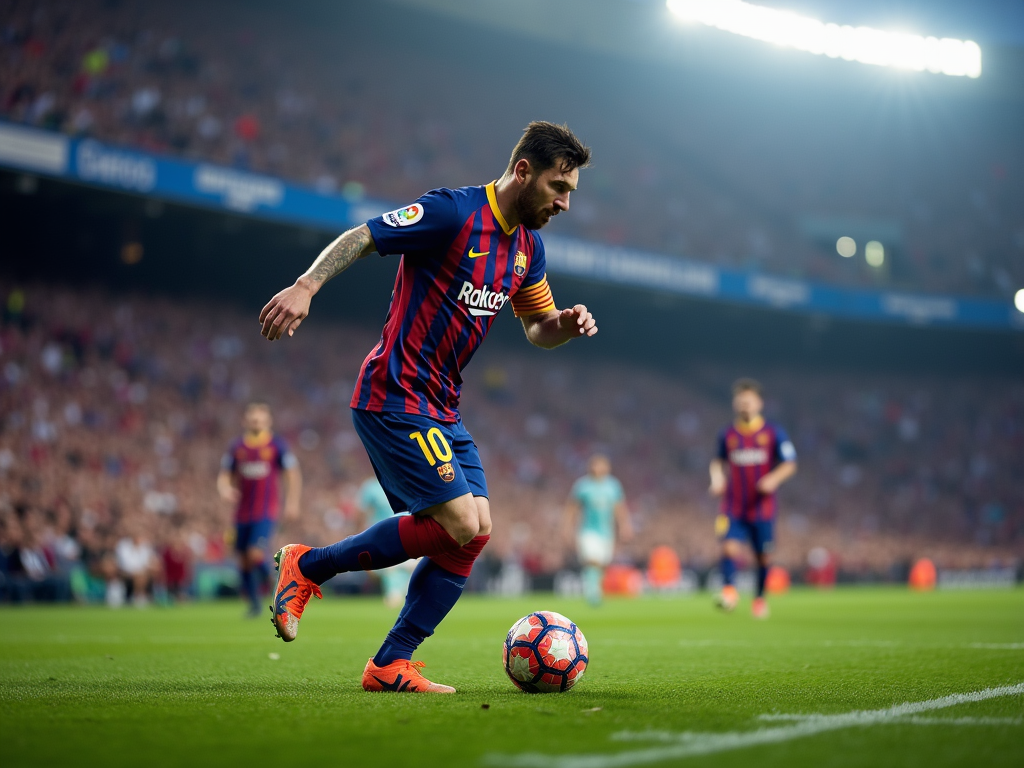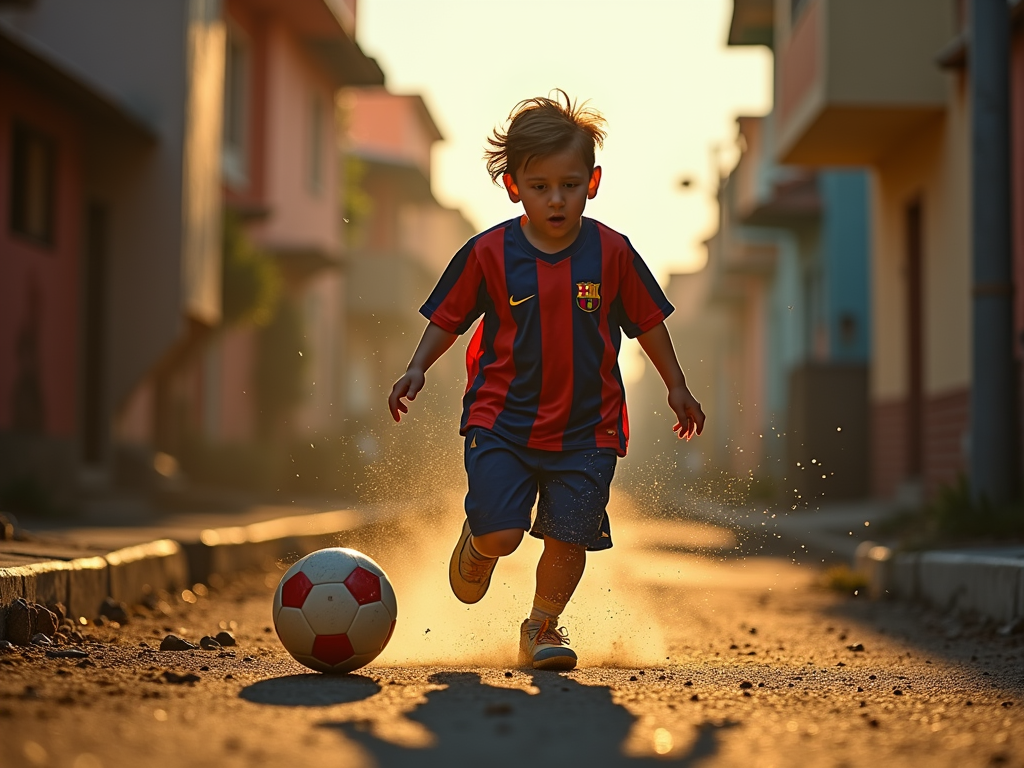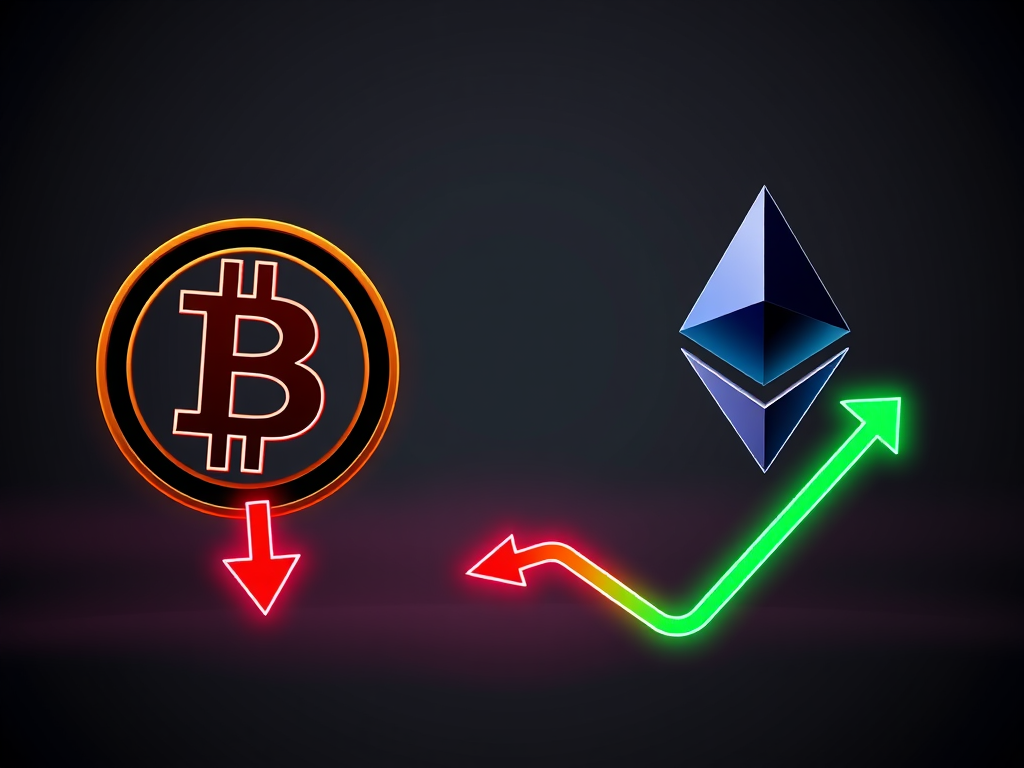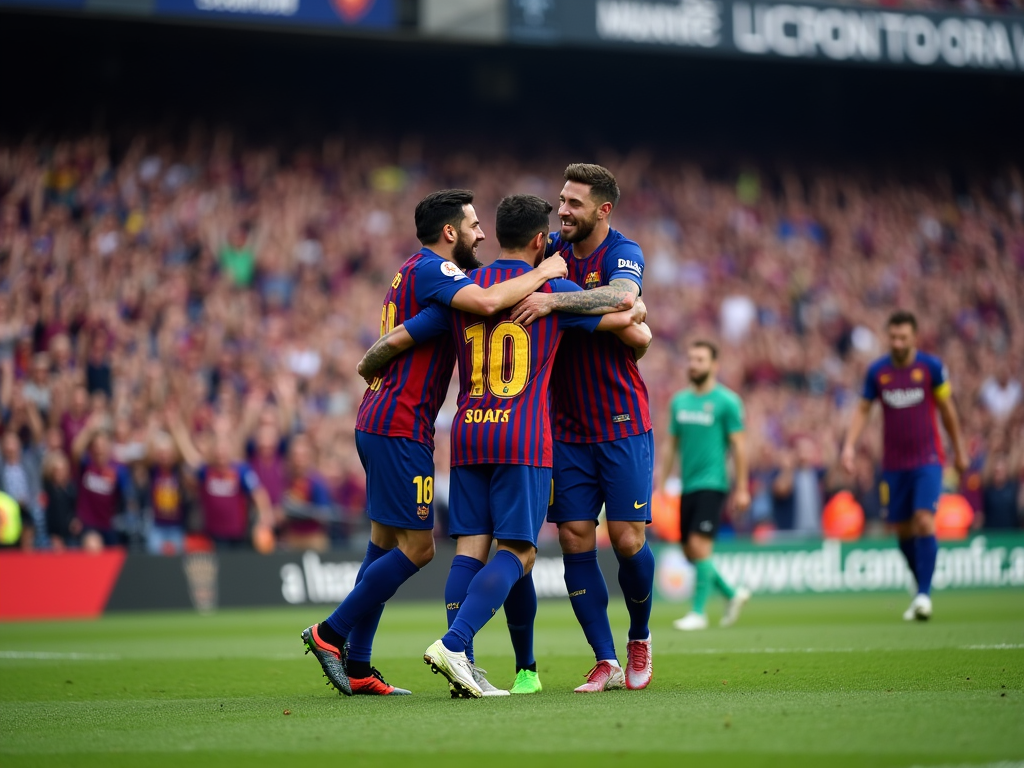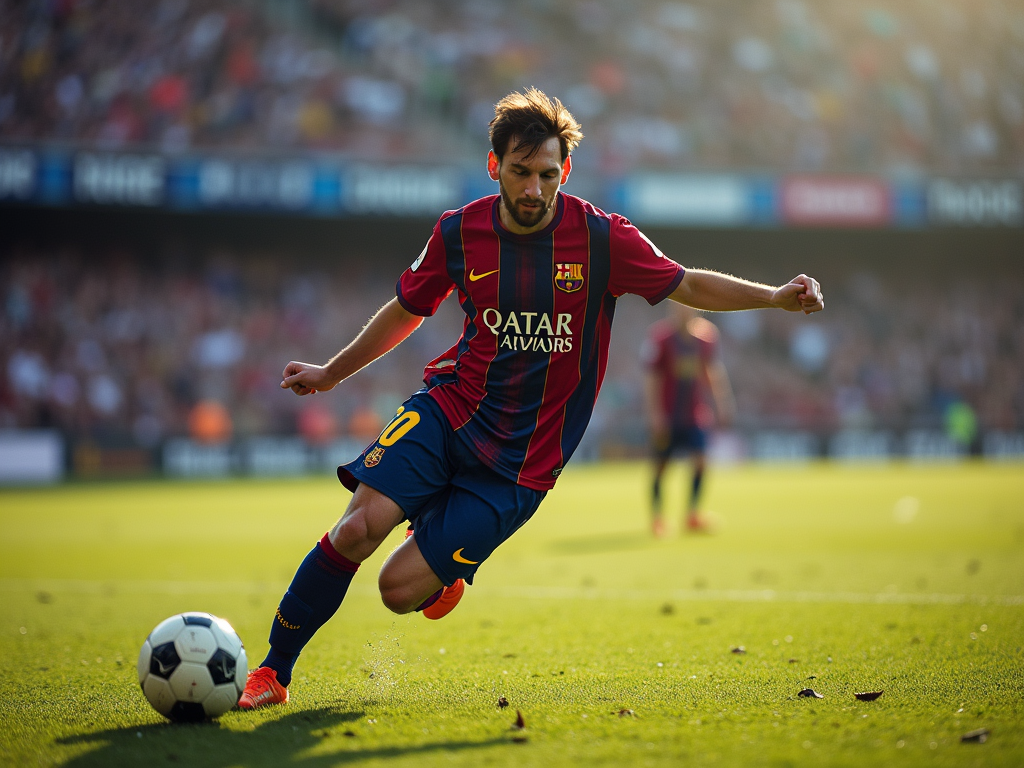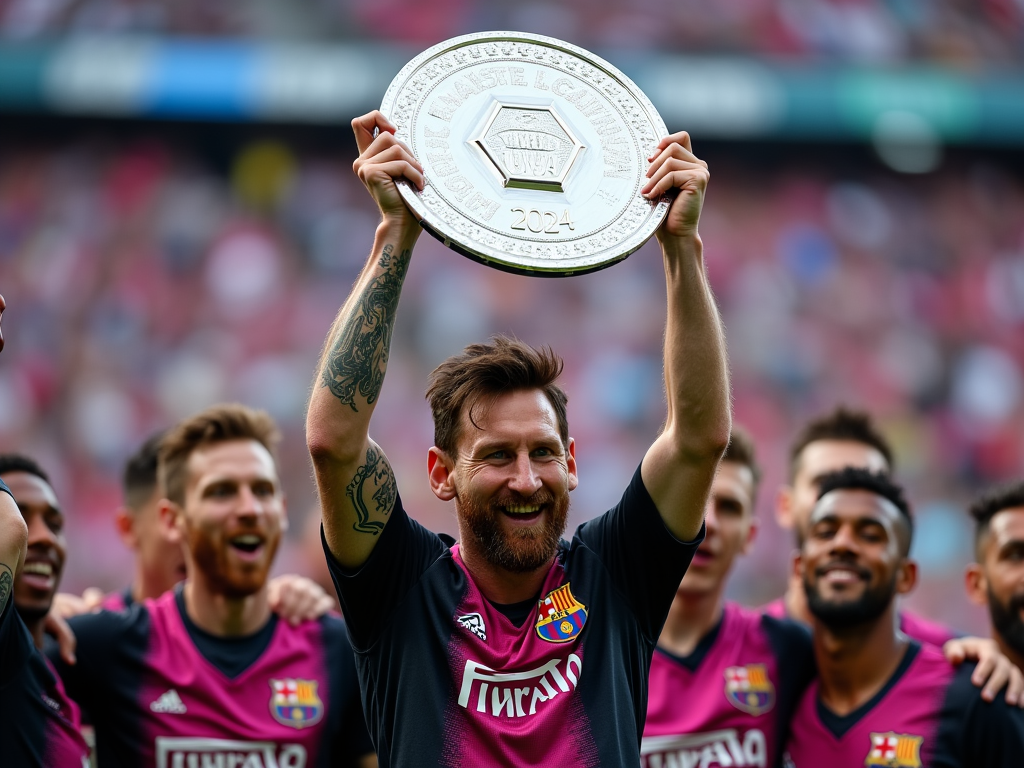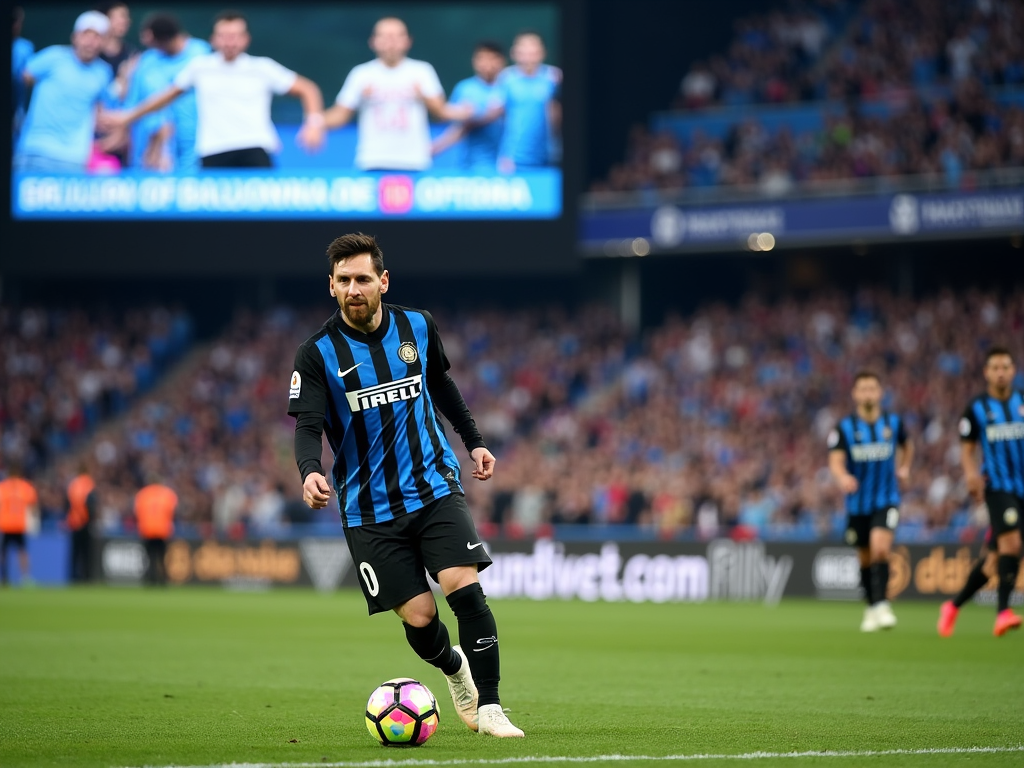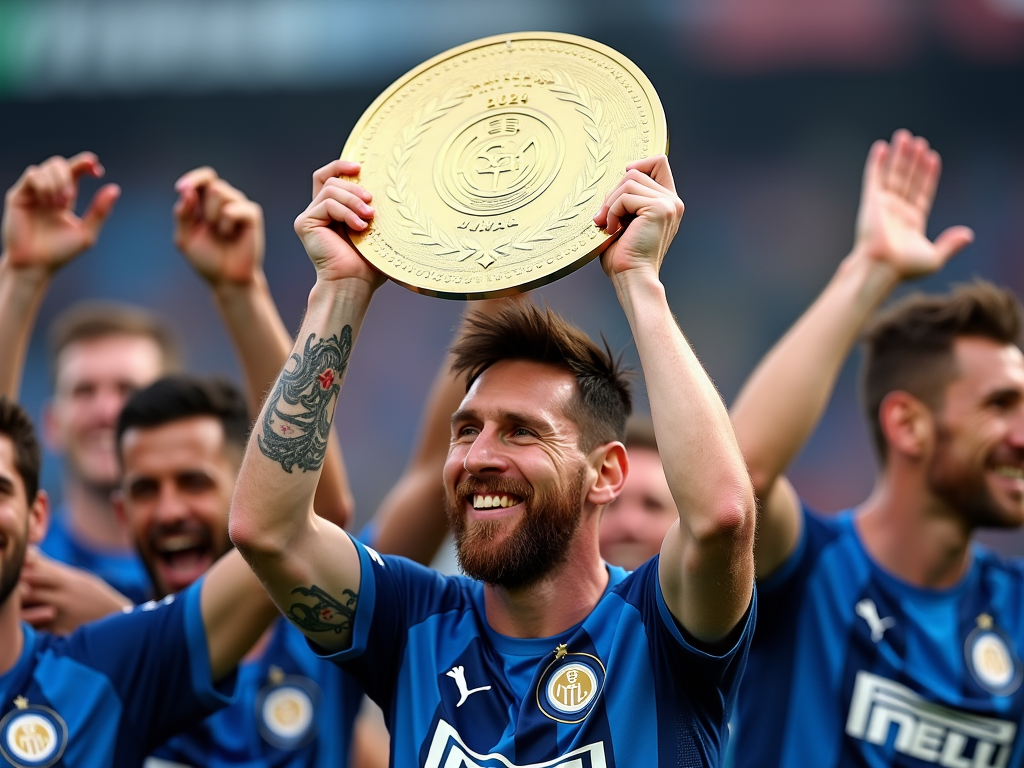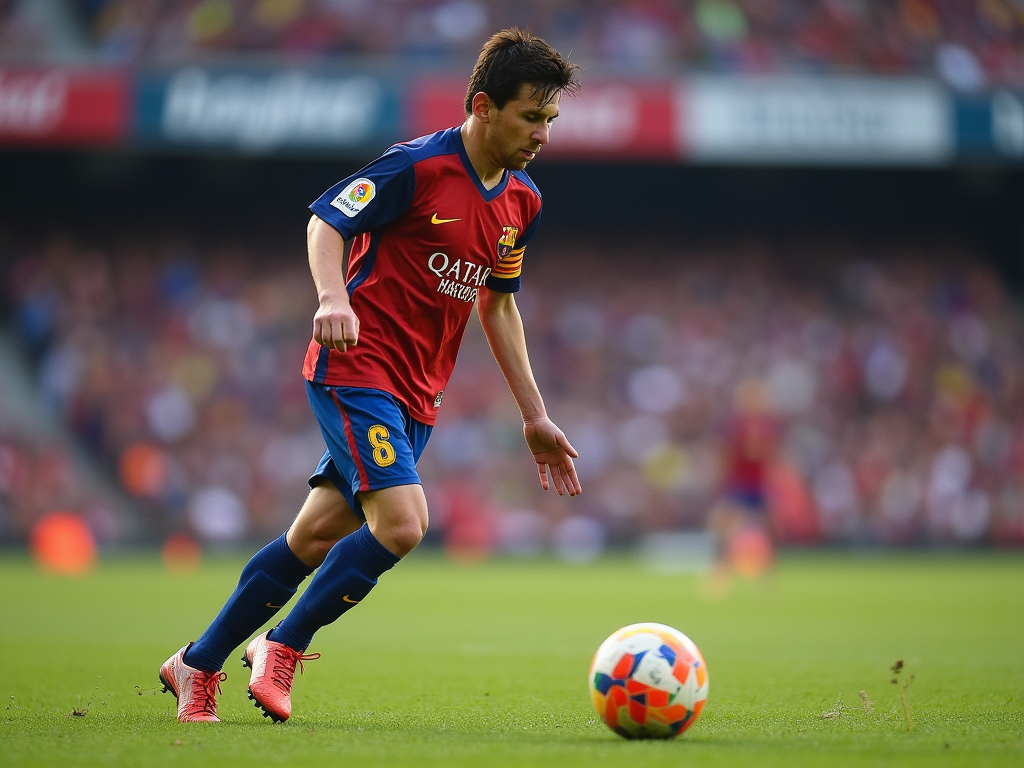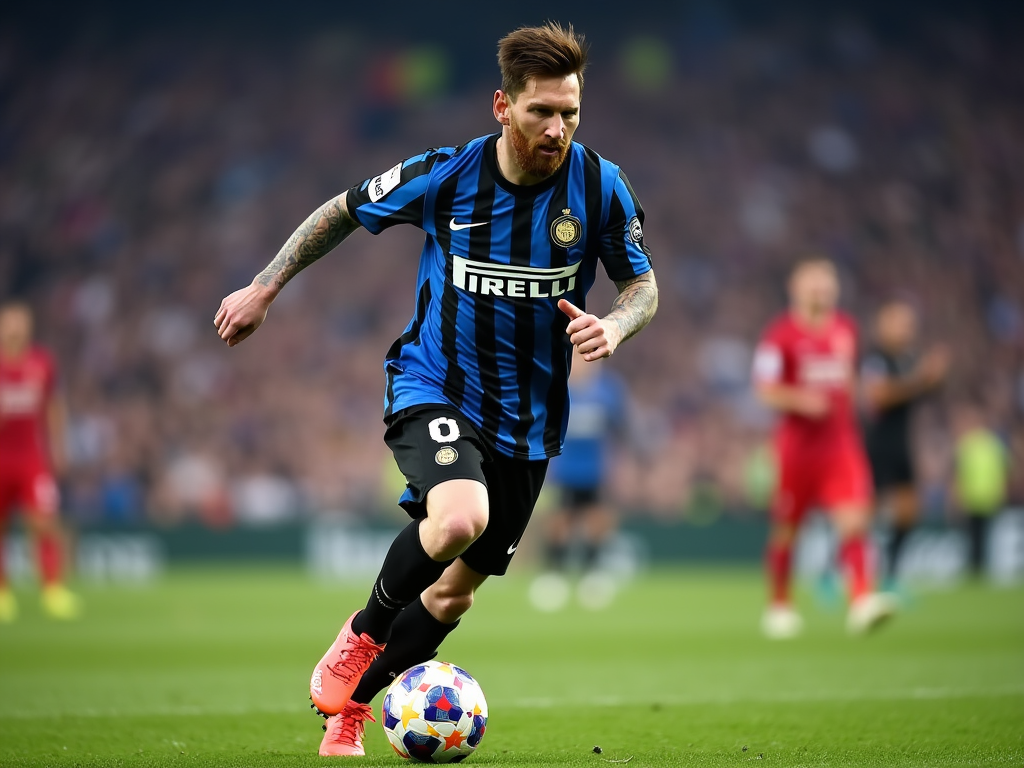Origin and Early Life
Rosario, Argentina, a bustling city with sun-drenched streets and passionate football culture, welcomed a small boy named Lionel Messi on June 24, 1987. Jorge Messi and Celia Cuccittini held their newborn son, unaware that this tiny infant would one day become a global sporting phenomenon. The Messi household was modest but filled with love, situated in the working-class neighborhood of Barracas, where football pulsed through every street corner and alleyway. From his earliest moments, Lionel was different. While other children played carelessly, he displayed an unusual connection with the football. His left foot seemed almost magnetized to the ball, moving with an intuition that defied his young age. Family members would later recall how he would kick anything resembling a ball – rolled-up socks, small rocks, anything that could be transformed into a makeshift football. By age four, Messi’s passion was evident. His grandfather, Angelo Cuccittini, would watch the boy intently, recognizing a spark of extraordinary potential. The family noticed something special – not just talent, but an almost spiritual relationship with the game. Lionel would spend hours practicing, his small frame darting between imaginary defenders, his movements already suggesting a future brilliance. However, his early life was not without significant challenges. At age eight, doctors discovered a growth hormone deficiency that threatened his athletic aspirations. Treatment was expensive, costing nearly $900 per month – an astronomical sum for his working-class family. Jorge and Celia faced an impossible choice: abandon their son’s dream or find a way to make it possible.
FC Barcelona’s youth scouts had heard whispers about the prodigious Argentine boy. Carles Rexach, the club’s sporting director, saw beyond Messi’s physical limitations. During a crucial meeting, he scribbled a contract on a paper napkin, pledging to support Messi’s medical treatment if he would join their youth academy. This moment would become legendary in football history – a napkin contract that would change everything. The decision to move to Spain was not easy. Lionel was just 13, small for his age and facing a complete cultural and linguistic transformation. His growth hormone treatment continued, with the club covering medical expenses. His father Jorge accompanied him, leaving behind his job and familiar life in Rosario, sacrificing everything for his son’s potential. Barcelona’s youth facilities became Lionel’s new world. La Masia, the club’s renowned academy, was unlike anything he had experienced. Coaches like Charly Rexach and Josep Guardiola saw something extraordinary in the young Argentine. His size was compensated by an otherworldly ball control, an almost supernatural ability to anticipate movements and create spaces where none existed. Training sessions became his sanctuary. While other boys focused on physical strength, Messi developed an intricate understanding of football’s subtle dynamics. His technique was poetry – each movement calculated, each touch deliberate. Teammates watched in awe as this diminutive player danced around defenders, his low center of gravity becoming an unexpected weapon. Language initially posed a significant barrier. Catalan and Spanish were foreign tongues, making communication challenging. But football became his universal language. On the pitch, he didn’t need words. His feet spoke volumes, communicating emotions, strategies, and dreams more eloquently than any verbal expression.
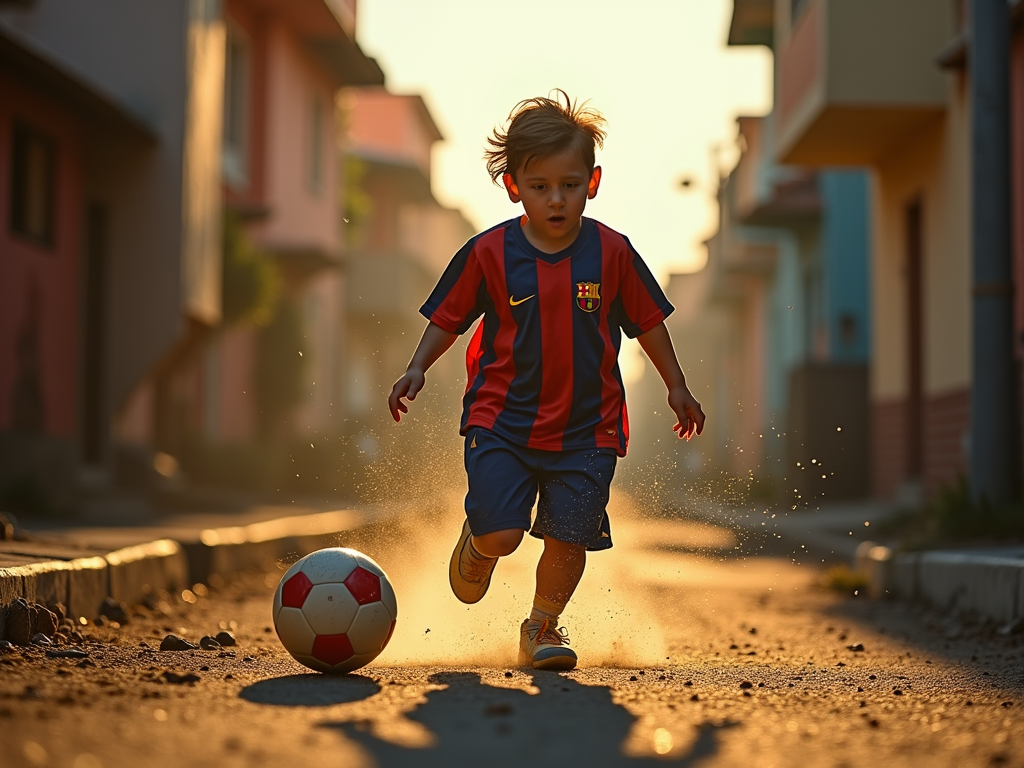

Rise to Stardom
The fluorescent lights of La Masia cast long shadows across the training ground. Lionel Messi, barely twelve years old, moved with an extraordinary grace that defied his small stature. His feet danced across the ball, weaving intricate patterns that left seasoned coaches watching in stunned silence. Growth hormone deficiency had been his earliest challenge. Doctors had predicted he might never reach normal height, and expensive treatments were required just to give him a chance at a normal life. Barcelona saw something more – they saw potential beyond physical limitations. The club not only offered medical support but also a pathway to transform his raw talent into something extraordinary. Jorge Messi watched from the sidelines, his heart a mixture of hope and anxiety. Every dribble, every precise movement his son made seemed to challenge the medical predictions. Lionel wasn’t just playing football; he was rewriting the narrative of what was possible. The Barcelona youth coaches recognized immediately that this wasn’t an ordinary player. His low center of gravity, exceptional ball control, and intuitive understanding of space made him unique. Where other players saw obstacles, Messi saw opportunities. His small frame became an advantage, allowing him to change direction with lightning speed and slip past defenders who towered over him. Training sessions became a canvas where Messi painted his footballing poetry. Each practice was an opportunity to prove that limitations were merely suggestions, not absolute rules. His teammates would later recall how even in youth matches, he moved differently – with a confidence and skill that suggested he was destined for something extraordinary.
The economic strain on his family remained constant. The monthly cost of his growth hormone treatment was substantial – nearly 900 dollars, a significant burden for a working-class family in Rosario. Barcelona’s decision to cover these medical expenses wasn’t just a sporting investment; it was a lifeline that would change everything. Josep Maria Minguella, the talent scout who first noticed Messi, remembered being struck by his exceptional skill. “He was so small, but moved like he was born with a football at his feet,” he would later recount. This wasn’t mere talent; this was a prodigy in the making. By thirteen, Messi’s reputation within La Masia’s hallowed halls was growing. Coaches would gather to watch his training sessions, recognizing that they were witnessing something unprecedented. His technique was fluid, almost balletic – a perfect blend of Argentine street football improvisation and Barcelona’s disciplined tactical approach. The physical challenges remained. Hormone treatments continued, and Messi’s body was constantly fighting against potential stunted growth. Yet his spirit remained unbroken. Every medical hurdle became another challenge to overcome, another opportunity to prove his extraordinary potential.
Carles Rexach, Barcelona’s sporting director, became one of Messi’s earliest and most ardent supporters. Legend says he was so convinced of Messi’s potential that he signed the initial contract on a napkin, ensuring the young Argentine would have his opportunity. It was a moment that would be etched in football folklore – a simple piece of paper that would change the trajectory of world football. Training sessions transformed from mere practice to quasi-mythical events. Young players would crowd around, watching Messi’s movements, trying to decode the magic that seemed to flow so naturally through his feet. He wasn’t just learning football; he was reinventing how the game could be played. The foundation was being laid – not just for a career, but for a legacy that would transcend the sport itself. Lionel Messi was becoming more than a player; he was becoming a symbol of possibility.
His teammates began to recognize something special was happening. During youth matches, Messi moved with an almost supernatural awareness, anticipating passes before they were made, creating spaces where none seemingly existed. The other boys would watch in a mixture of admiration and bewilderment as he transformed the football pitch into his personal playground. Frank Rijkaard, Barcelona’s first-team coach during Messi’s early years, started taking notice. During occasional youth team observations, he would see this diminutive player and sense something revolutionary. The way Messi controlled the ball wasn’t just skill; it was an intimate conversation between player and object, a relationship that seemed to defy conventional physics. Growth hormone treatments continued, each injection a reminder of his physical challenges. But Messi never saw these as limitations. Instead, they became fuel for his determination. While other players relied on physical strength, he was developing an intelligence that would become his most potent weapon. The financial strain remained constant. His family sacrificed everything, understanding that this could be their son’s pathway to a better life. Jorge Messi worked tirelessly, supporting his son’s dream with unwavering commitment. Football wasn’t just a sport in their household; it was a potential lifeline.
Barcelona’s youth system recognized that Messi was more than a prospect – he was a generational talent waiting to be unleashed. Training sessions became laboratories where his extraordinary skills were carefully nurtured. Coaches designed specialized drills that would enhance his natural abilities, understanding they were working with something rare and precious. His ball control was hypnotic. Where other players saw boundaries, Messi saw possibilities. He could stop a moving ball with such precision that it seemed to freeze mid-air, then explode into motion with a suddenness that left defenders confused. Each movement was calculated, yet appeared utterly spontaneous. The psychological component of his development was equally crucial. La Masia wasn’t just teaching football; they were building a complete athlete. Messi learned tactical awareness, mental resilience, and the importance of teamwork. His small stature meant he had to be smarter, more strategic than his peers. Conversations among coaches often centered around this extraordinary young player. “He’s different,” they would say, exchanging knowing glances. “Something special is happening here.”
Tactically, Messi was evolving into a player who could not be confined to traditional positions. Right wing, center-forward, attacking midfielder – these were mere suggestions. He was developing a fluidity that would eventually revolutionize modern football. His family remained his emotional anchor. Regular calls to Argentina, conversations with his grandparents and siblings, kept him grounded. Despite the growing buzz around his talent, Messi remained humble, understanding that every opportunity was a privilege to be respected. The pathway to professional football was becoming clearer. Barcelona’s youth system had produced legends before, but Messi represented something unprecedented. He wasn’t just following a tradition; he was about to redefine it. Nights were spent studying game recordings, analyzing movements, understanding not just how to play, but why certain decisions were made. This wasn’t just talent; this was an intellectual approach to the sport that set him apart from his contemporaries.
Youth tournaments became platforms where Messi’s brilliance began to shine internationally. Opposing teams would develop specific strategies just to contain him, a testament to his growing reputation. But containment was a concept Messi seemed to find amusing, consistently finding ways to breakthrough defensive lines. The blueprint of a football genius was being meticulously crafted, one training session at a time. Barcelona had discovered more than a player – they had found a potential transformative force that would reshape how the world understood football.
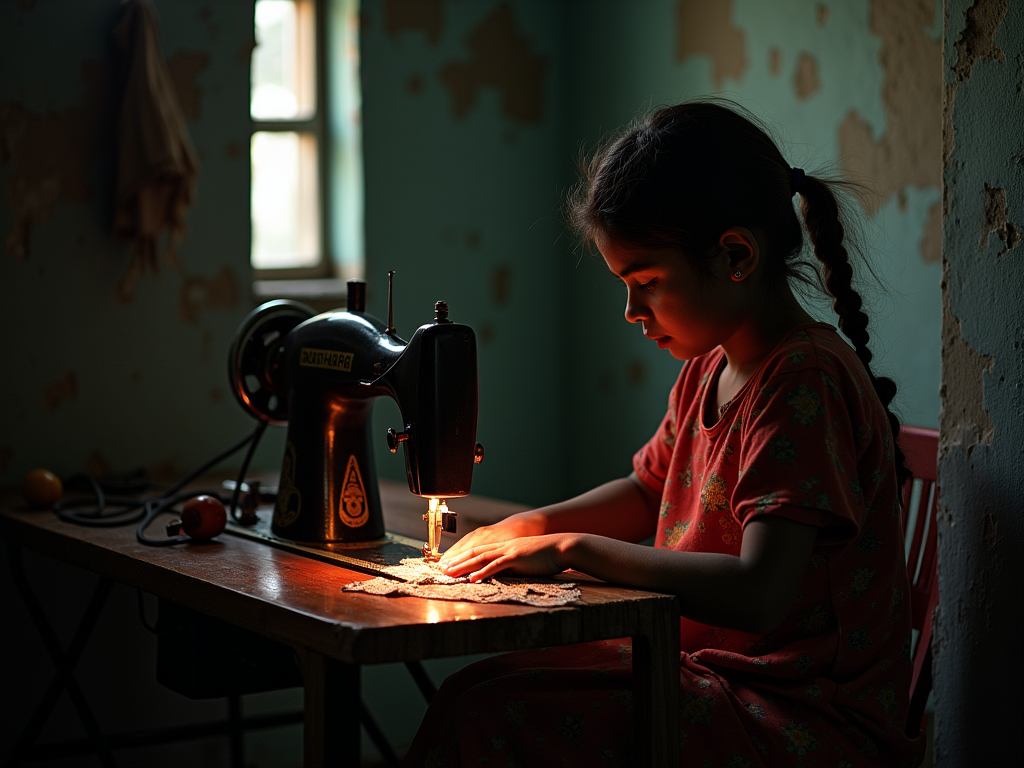

Legacy and Influence
The footprints Lionel Messi left on football’s hallowed ground were more than just statistical achievements. They were transformative marks that reshaped how the game was understood, played, and perceived. His extraordinary technical mastery and intuitive understanding of football’s subtle rhythms challenged traditional paradigms of player performance. Young footballers across continents watched Messi’s movements with profound reverence. In dusty streets of Buenos Aires, crowded European suburbs, and remote African villages, children mimicked his low-center-of-gravity dribbling, attempting to replicate the magical way he seemed to make the ball an extension of his own body. His style wasn’t just about skill; it was poetry in motion, a narrative of athletic brilliance that transcended cultural and geographical boundaries. Barcelona’s tactical evolution bore Messi’s unmistakable signature. Coaches worldwide began reimagining forward positions, recognizing that a player could simultaneously be a creator, scorer, and strategic orchestrator. His role redefined the concept of a “number 10”, blending playmaking genius with clinical goal-scoring precision that seemed to defy conventional football logic. Beyond technical innovations, Messi represented something deeper – a symbol of perseverance. His journey from a growth-hormone-deficient child to global sporting icon became an inspirational template for countless dreamers. He demonstrated that extraordinary achievement could emerge from seemingly insurmountable circumstances, turning personal vulnerability into universal strength. His influence extended beyond personal achievements. Messi became a global ambassador, using his platform to support humanitarian causes, particularly children’s health and education initiatives. His quiet philanthropy spoke volumes, showing that true greatness encompasses more than athletic prowess. The statistical records he accumulated were breathtaking – multiple Ballon d’Or awards, goal-scoring records, championship titles – but numbers alone couldn’t capture his essence. Messi represented something more profound: the purest expression of footballing artistry, a living embodiment of the sport’s most sublime possibilities.
The global football community watched in awe as Messi’s influence expanded beyond individual brilliance. Young players in academies across Europe began studying his technique with an almost scientific precision. Coaches dissected video footage of his movements, analyzing the near-imperceptible body shifts that allowed him to navigate impossible spaces on the football pitch. In Argentina, he became more than an athlete – he was a national icon representing hope and resilience. Children wore his jersey not just as a fashion statement, but as a symbol of potential transformation. His journey from a small town in Rosario to global superstardom represented a collective national dream, a testament to what determination could achieve. The psychological impact of Messi’s play was equally remarkable. Defenders seemed to develop a complex psychological relationship with him – simultaneously respecting and fearing his capabilities. Many top-tier defenders admitted privately that marking Messi felt like an existential challenge, a chess match where traditional defensive strategies seemed obsolete. His technical innovations gradually transformed tactical thinking. Coaches like Pep Guardiola had already recognized Messi’s potential to redefine positional play, but his continued evolution suggested that football itself was adapting to his unique capabilities. The traditional boundaries between midfield and forward positions became increasingly blurred, with Messi representing a new archetype of footballing intelligence. The economic impact of his career was staggering. Sponsorship deals, merchandise sales, and global brand recognition turned Messi into a global economic phenomenon. Football clubs recognized that signing or associating with him meant more than athletic performance – it was an investment in global visibility and marketability. Beyond the commercial aspects, Messi remained committed to authentic representation. His foundation continued supporting underprivileged children, providing educational opportunities and healthcare, demonstrating that his legacy was not confined to sporting achievements but extended to genuine social impact.
